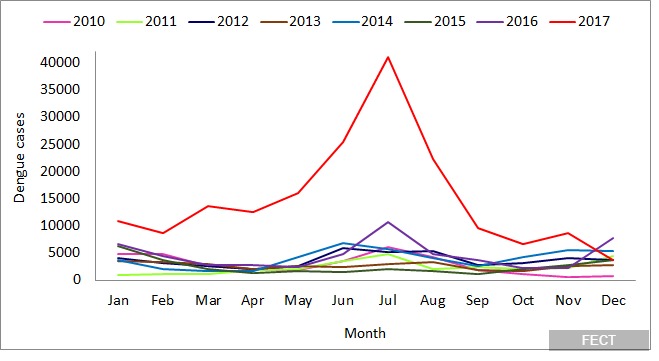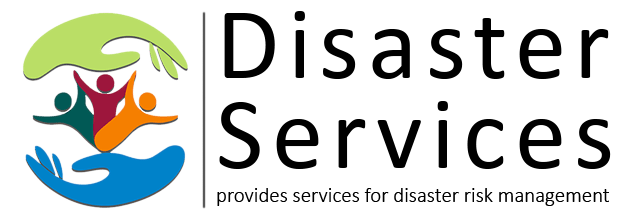Public Health
Dengue
2017 experienced the worst dengue outbreaks in the Sri Lanka’s history. This outbreak is illustrated in figure 21. There could be several reasons for the spread of dengue which is a mosquito viral infection. The usual culprit for Dengue has been noted to be idle water on which the mosquito larvae breeding takes place. The mosquitoes also are very sensitive to the temperature and usually in cooler climates the prevalence of Dengue has been limited. There is the possibility that the prevailing drought conditions did trigger a continuous uninterrupted phase of temperature which was susceptible for mosquito breeding.

Impacts
- NATURAL DISASTER HOTSPOTS OF SRI LANKA (Vidhura Ralapanawe Et Al) – Major Natural Disaster affecting Sri Lanka are floods, landslides, cyclones, drought all driven by weather and climate. There is a need to identify causes and proactive steps to be taken for mitigation.
- POTENTIAL RAINWATER HARVESTING – A CASE STUDY FROM IDAMELANDA, SL (Ranmalee Bandara Et Al) – Drought is the most frequent disaster in Sri lanka and the expenditure on relief has been dominant except for the recent Tsunami. Drought leads agricultural losses, hardships and rain harvesting techniques are being revived due to this tendency.
- Climate and Water Resource Management (Sumudhu Adikari Et Al) – A collaborative project between the Mahaweli Authority od Sri Lanka and the IRI to investigate the use of climate information and predictions for water resources management.
- Seasonal Streamflow predictions for Water Resource Management in SL (Sumudhu Adikari Et Al) – Rainfall in Sri Lanka shows teleconnections with El Nino phenomenon and Indian Ocean features.
- El Nino. La Nina and Rice Production in SL (Lareef Zubair Et Al) – A relationship between the El Nino state and seasonal rainfall and rice production in Sri Lanka has been discovered. The technological discovery coupled with predicting El Nino state upto a yearn in advance provides policy makers ability to anticipate climatic anomalies.
- The impact of ENSO on rice production area and yield in SL (Sumudu Adhikari Et Al) – The relationship of Sri Lankan regional rice production, harvested area and yield with rainfall and ENSO for the Maha and Yala cultivation seasons based on data from 1950-2009 was analyzed using correlation analysis, regression analysis and composite analysis.
- Climate and Health : Malaria and Dengue in SL( Lareef Zubair Et Al) – Both these diseases put at risk large numbers on the world also making it necessary for Government funding to combat worst case scenarios. An association between, ENSO and Malaria has been reported as well as a link between climate and Dengue in Sri Lanka.
- Challenges in implementing an echo-health approach to mitigate emerging infectious diseases in Kandy, SL ( Kusumawathie P.H.D Et Al) – Conventional approaches to manage re-emerging infectious diseases adopted by health agencies have limitations – some of these may be overcome through the adoption of an eco – health approach.
- Fine Scale evaluation of drought hazard for tropical climates ( Lyon B ET Al)
- Towards developing a weather and climate prediction for Sri Lanka (L. Zubair)
